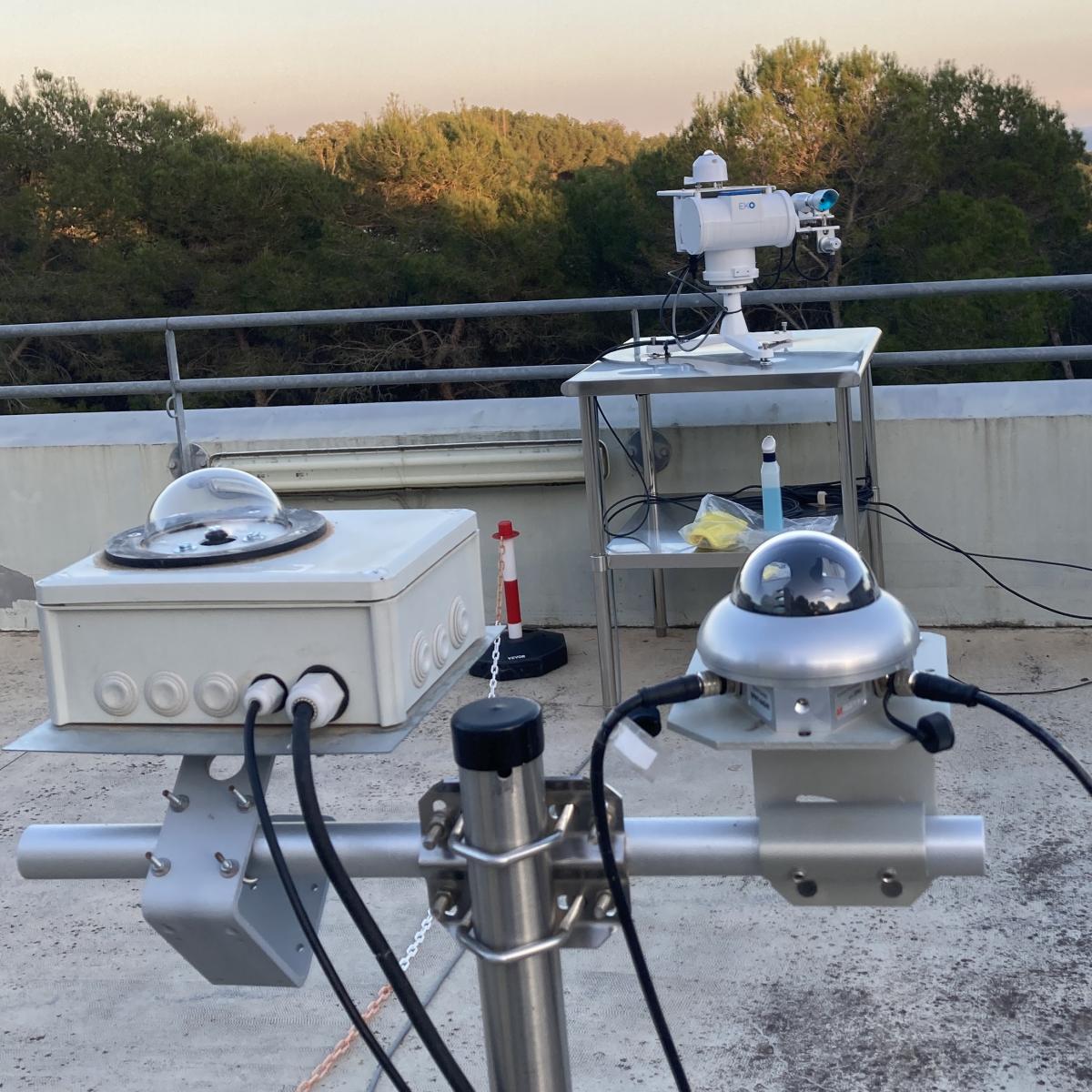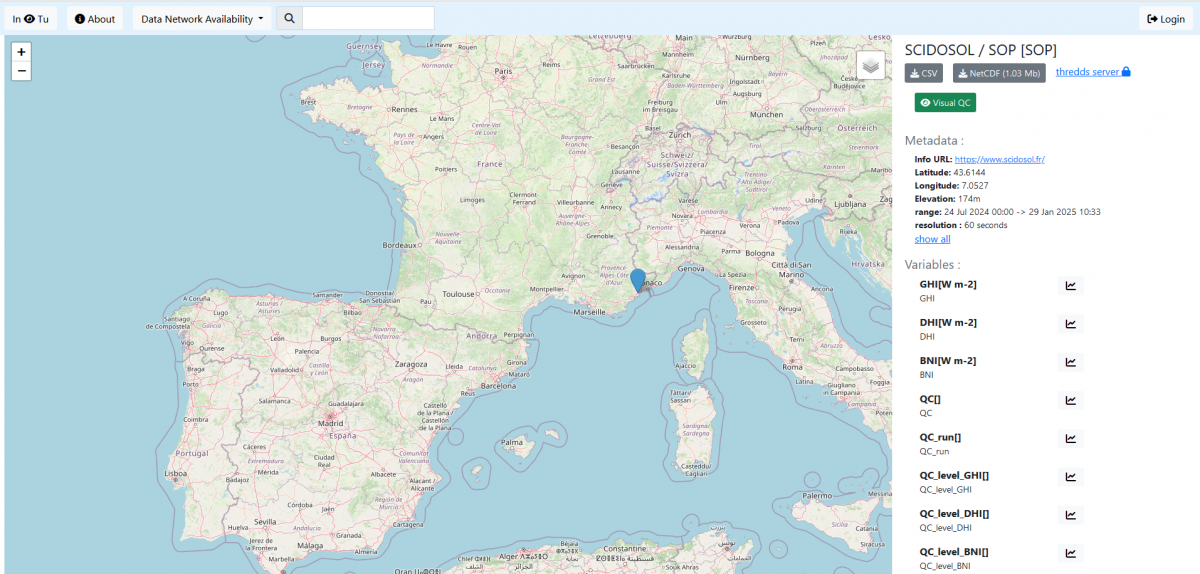Monitoring Station
 |
 |
In 2024, SciDoSol commissioned a high-quality solar monitoring station with the following objectives:
- characterizing the solar resource in Sophia Antipolis, in southeastern France;
- supporting the validation of satellite-based and numerical weather models;
- showcasing solar measurement instrumentation, quality control and data formatting for training and teaching purposes;
- hosting the testing of new low-cost devices to monitor downwelling surface solar radiation.
The station provides colocated high-quality scientific reference data for the Global Horizontal Irradiance (GHI), Diffuse Horizontal Irradiance (DHI) and Beam Normal Irradiance (BNI) measurements from the three-components pyranometric stations, 7 partially-shaded horizontal measurements from SPN1 and hemispherical sky images from the low-cost fish-eye camera. Specifically, the station comprises:
- EKO MS-80SH Class A Pyranometer for GHI measurements
- EKO MS-57 Class A Pyrheliometer for BNI measurements
- EKO MS-80 Class A Shaded Pyranometer for DHI measurements
- EKO STR-21G Sun Tracker
- Delta-T SPN1 for GHI, DHI and BNI measurements
- In-house low-cost fish-eye camera
- Campbell Scientific CR1000X data logger
Initial intercomparisons between the instruments demonstrate that the SPN1 BNI is overestimated by 7% when compared to the MS-57 measurements, whereas the SPN1 DHI is underestimated by 11% when compared to that of the EKO radiometers. This discrepancy is a topic for further investigation. The sky radiance measurements of the low- cost all-sky imager, along with the measurements of the seven SPN1 thermopiles, may be of use for this purpose.
The aim is to push for FAIR principles and the usage of interoperable and self-describing data, easing the scientific community to leverage open-data. Thus, a Data Management Plan (DMP) has been drafted with regard to the use of the solar irradiance measurements.
libinsitu, an open-source python library developed by Centre O.I.E., was utilized to transform the heterogeneous time series of the in-situ measurements into well-formed binary NetCDF files which are ready for sharing. libinsitu also provides specific tools, like the computing and embedding quality control flags and generating graphs to check visually the control of data.
Following libinsitu, the measurements of the station and their quality control flags have been added on the THREDDS server for open accessibility at http://tds.webservice-energy.org/thredds/catalog/scidosol-stations/catalog.html.

